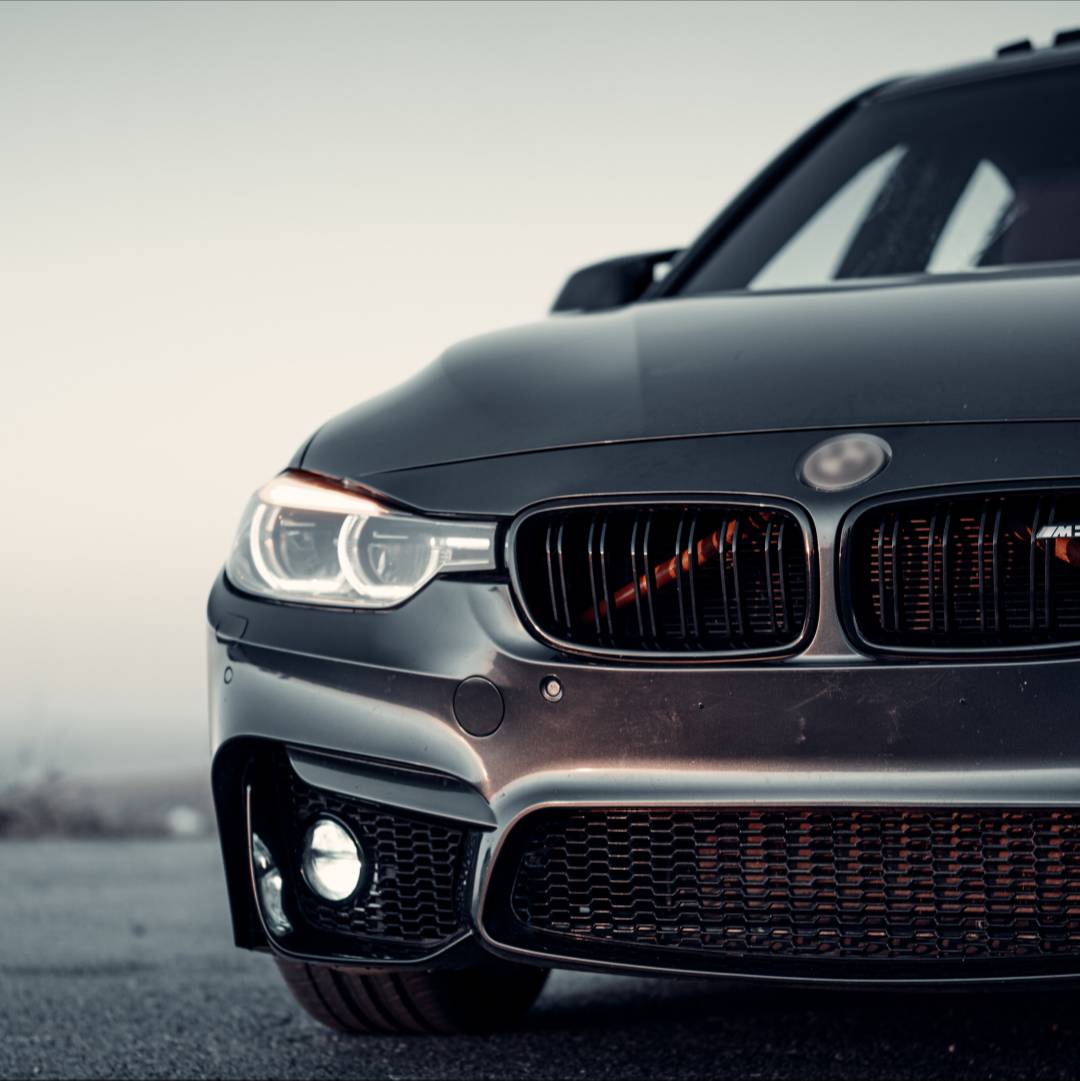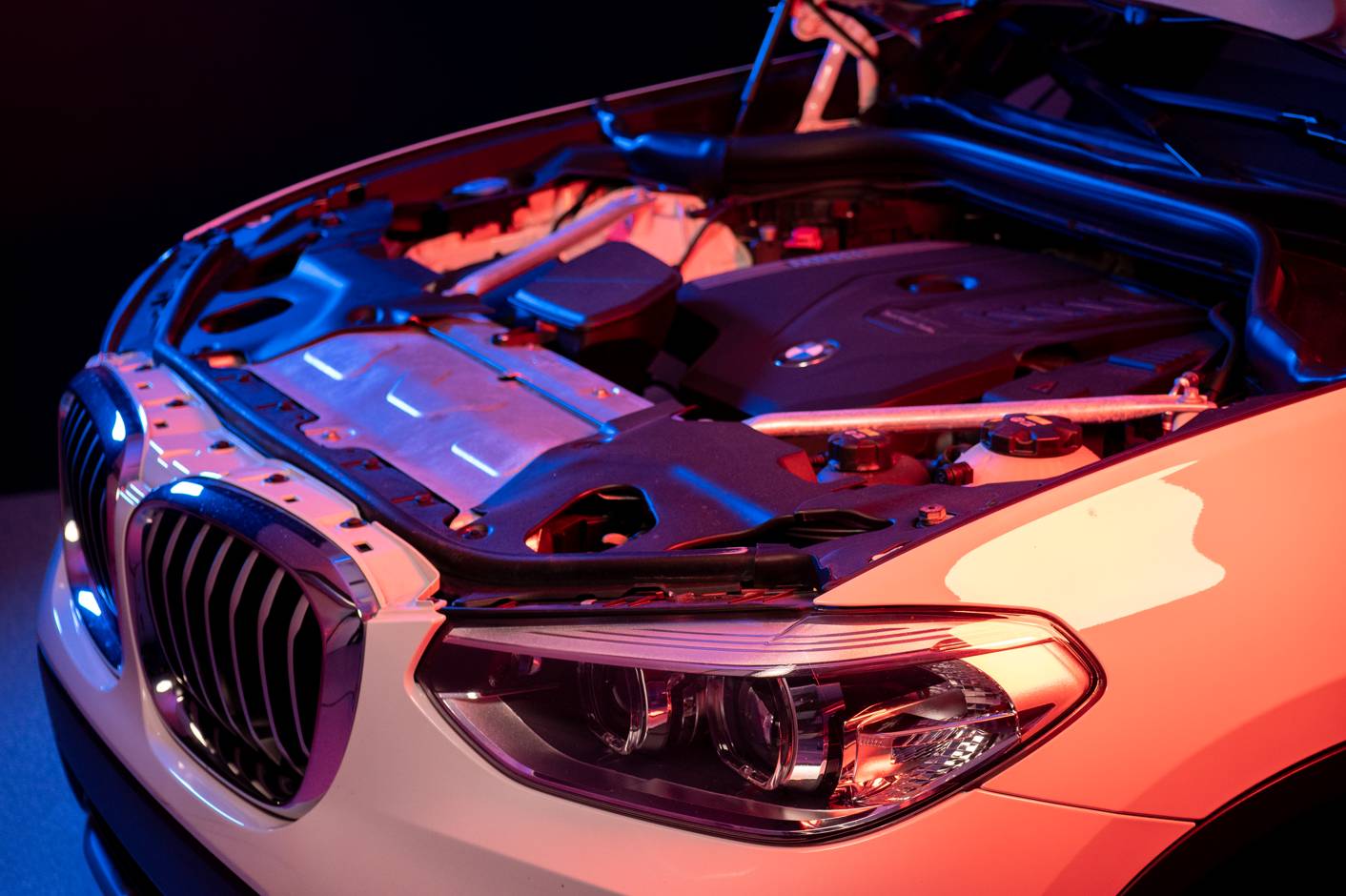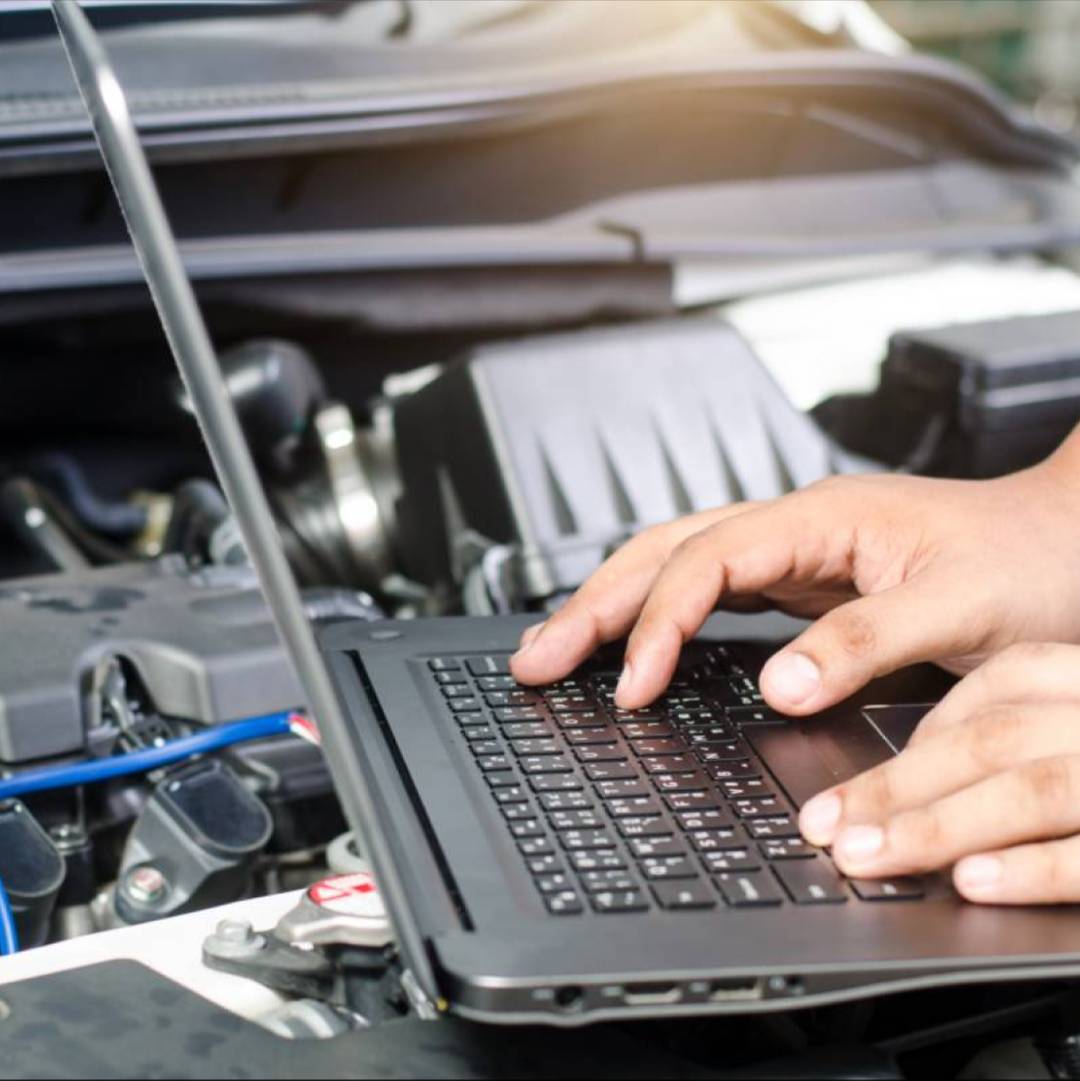[[post.title]]
May 9, 2023

Maybe you aren't into racing. Maybe you aren't even a petrolhead. However, you're still a driver – you just don't care that much about technical data. What you are interested in are the outcomes and the resulting driving pleasure.
Numbers? Yes, they are there, as you’ll see later in this article.
The bottom line is: we don’t chase them for the sake of some on-street pissing contest. We make the performance kick in smooth, fast, and in the most enjoyable way. It’s like the right balance of coffee and milk, the right amount of maple syrup on a pancake. It’s about balancing torque with power, the acceleration potential. But, most importantly, linear power delivery.
After all, why would you care about having over 300 hp all the way up below the freaking redline when you could have 290 available right when you step on the gas pedal? So that when you floor it, the RPMs go up and up, but the power doesn’t wither – oh no! It stays with you throughout the entire rev range.
That’s exactly what we promise you – useful gains, better longevity, and improved fuel economy.
Since we’ve already covered the BMW N20 engine and its reliability in detail in one of our previous articles, we’ll keep it brief and to the point. However, it’s still worth mentioning why we’ve chosen this engine as the testbed of sorts for our ECU tuning service.
 Introduced in 2011, the BMW N20 is a turbo inline-four gasoline that marked BMW's entry into the engine downsizing era and replaced a bigger, naturally aspirated inline-six N53 engine. It was produced in two variants: the N20B16 with 1.6 L displacement and the N20B20 with 2.0 L displacement, both utilizing a lightweight aluminum open-deck engine block design.
Introduced in 2011, the BMW N20 is a turbo inline-four gasoline that marked BMW's entry into the engine downsizing era and replaced a bigger, naturally aspirated inline-six N53 engine. It was produced in two variants: the N20B16 with 1.6 L displacement and the N20B20 with 2.0 L displacement, both utilizing a lightweight aluminum open-deck engine block design.
Very innovative for its time, all variants of the N20 featured a twin-scroll turbocharger, direct fuel injection, variable valve lift and timing, as well as an unconventional electric water pump. Despite the fact that this solution offers greater control over the coolant flow and reduces energy waste, it also increases engine complexity, which can lead to potentially costlier repairs compared to other, more traditional pumps.
That’s all fine, but just how much power were the Bavarians able to squeeze out of the N20 on the stock ECU map?
Well, the N20B16 produced 168 hp and 250 Nm (184 lb/ft ) of torque, while its bigger brother marked by the B20 suffix made from 154 to 241 hp and from 240 to 350 Nm (177 lb/ft–258 lb/ft) of torque. Although 241 hp may not seem like much, it’s actually quite a respectable figure even by today’s standards – especially given the fact that it was never meant as a true performance engine, like the factory-modified sport version of the later BMW B48 engine.
There also was a BMW N26 version of this engine, sharing around 95% of components with the base N20. Producing the same 241 hp and 258 lb/ft of torque, it was meant to meet the American SULEV (Super Ultra Low Emissions Vehicle) standards. The changes between the two included fuel system revisions (different lines, tank, and pump), electronically controlled turbo wastegate (a modification also present in 2012 and up N20s), as well as a more restrictive catalytic converter.
Which BMWs received the N20 engine?
| Model | Years of production |
| Z4 sDrive18i / 20i / 28i (E89) | 2011–2016 |
| X1 xDrive / sDrive20i / 28i (E84) | 2011–2015 |
| X3 xDrive20i / 28i (F25) | 2011–2017 |
| X3 sDrive18i (F25) | 2013–2017 |
| X4 xDrive28i (F26) | 2014–2017 |
| X5 xDrive40e (F15) | 2016–2018 |
| 125i (F20) | 2012–2017 |
| 220i / 228i (F22) | 2014–2016 |
| 320i / 328i (F30) | 2011–2016 |
| 320i / 328i GT (F34) | 2013–2016 |
| 420i / 428i (F32) | 2014–2016 |
| 520i / 520Li / 525Li / 528i (F10) | 2011–2016 |
Naturally, since it was “a first” for the BMW—that is, their first mass-produced gasoline four-banger—its introduction wasn’t as smooth as they probably wished…
The BMW N20 engine is relatively well-designed but has two areas where it falls short: intake air temperature and material composition.
Due to how hot the intake air of the N20 can get, even in its stock form this engine often experiences engine knocking – a dangerous phenomenon that can lead to premature wear or even permanent damage to the internal components. Caused by incorrectly timed ignition, this serious problem makes itself known pretty clearly. When you hear a metallic pinging coming from your engine, it means that some of the air-fuel mixture ignites when it shouldn’t.
The thermal “kerfuffle” also makes it difficult to tune the BMW N20, but there is a reliable way to improve its power output despite that, which we’ll cover in a bit.
And when it comes to material composition problems, they all boil down to the plastic guides of the timing chain being made of inadequate plastics. Defective guides can lose flexibility over time, deteriorating and, eventually, breaking. When this happens, the timing chain becomes loose, usually ruining the engine – the timing system is crucial to control the opening of valves, fuel injection, and ignition.
BMW redesigned the faulty component in 2015 after discovering the problem, while a lawsuit led to a warranty extension for potentially affected models powered by N20 and N26 engines. However, a timing chain recall for all cars did not happen, so buyers of used BMWs may still encounter models with problematic components.
Now that we know about the BMW N20 engine and its issues, you’ll have a better understanding of what we did to resolve them when we start getting more technical. And you’ll see how important our improvements are not only in terms of performance.
So, without further ado: it’s time to reveal what we learned.
Our Awaken Performance engine tuning enhances your bimmer in three key areas that can be summed up with these words – driveability, mileage, and longevity. That being said, even more aspects amount to these characteristics, which is what we want to explore.
More power, more torque, more speed…! As primal as it might sound, performance improvements are what you are probably most interested in when tuning your car. But since it’s your daily driver that you are going to be modifying, you also don’t want to sacrifice its reliability, right?
Having both of these considerations in mind, we set a very simple goal for all of our ECU maps – we want you to experience safe and reliable gains. What it means is that when developing all of them we focus on increasing the power and torque as much as possible within the manufacturer’s safety margins.
Don’t worry though: you won’t be paying for unnoticeable changes. Quite the opposite, actually.
In the case of the BMW N20 engine and with our reliability-oriented tune, we were able to witness gains of around 6% for horsepower and 11% for torque. Things changed even more after we installed our Awaken Performance Quartz Frost Intercooler on our testbed car. With this upgrade, we’ve been able to extract approximately 19% more power and up to 26% more torque when compared to the factory ECU map and the stock intercooler. This translates to roughly 286 hp and 325 lb/ft (440 Nm) of torque.
Before you continue reading, there is one important thing that we would like you to note. Although we do our best to keep our tunes consistent across the board, it’s not physically possible to achieve the very same results every time.
That’s because such figures are affected by many variables, such as the different fit and finish of each engine unit, the quality of the fuel used, as well as the environment in which the car is being tested or used. Factors like air temperature or humidity are as likely to add a few horses as they are to take them away.
Regardless of the exact numbers you would get if you were to dyno your BMW after having it tuned with Awaken Performance by BimmerTech, you’ll still feel a great difference. Especially where and when it matters – our ECU tune vastly improves the low-end torque and overall engine responsiveness. Meaning you’ll be able to effortlessly merge onto the highway or swiftly overtake slower drivers.
Speaking of the air temperature: it’s time to dive deeper into another crucial improvement introduced by Awaken Performance.
How much power an engine can make is just one thing the air temperature affects. The other? Just as significant – the longevity of internal components. Which basically translates into the engine’s reliability.
Temperatures are also why we’ve chosen the BMW N20 to be our test subject. Compared to other inline-four gasoline engines on the market, its intake air temperatures (IAT) are rather high. But why does the IAT matter anyway?
Well, the answer is simple: the hotter the air sucked in by the engine is, the less power it can produce due to its lower density. When a turbocharger starts sucking, the air gets pressurized, which warms it up by quite a bit.
In turn, heat expansion causes the air molecules to move farther apart, increasing the volume. Since the number of molecules and, therefore, their mass remain the same, the density of the air becomes lower. Consequently, denser, cold air makes it possible for more gasoline to be burned resulting in more power produced.
Wasn’t that a cool (literally) grade school physics reminder? Now that we know why the intake air temperature matters in terms of performance, let’s see how much of a difference it makes for engine longevity.
Long story short, by lowering the IAT, you also lower the overall engine operating temperature. And it’s key to eliminating an issue the N20 is notorious for in its factory form – the engine knocking.
As silly as its name may sound, engine knocking is actually a really dangerous phenomenon that can lead to severe damage. Before we explain the exact mechanism of it and how we managed to completely eliminate it in the BMW N20 engine, let’s get to know the four intake strokes better – understanding them will help you fully appreciate the seriousness of engine knocking.
1. Intake
Also known as induction or suction, this is the first stroke in a traditional four-stroke engine. It begins with the piston in its uppermost position (professionally called top dead center or T.D.C.). The intake valves open and the piston travels downwards creating a vacuum and sucking the air (direct injection) or air-fuel mixture (port injection engines) in.
2. Compression
When the piston reaches its lowest position (a.k.a. bottom dead center or B.D.C.), all the valves close and the next stroke begins. The air (or the air-fuel mixture) gets compressed by the piston now moving upwards. In direct-injection gasoline engines, fuel gets sprayed into the cylinder in the upper half of the cylinder.
3. Power
This next stroke (sometimes called combustion or ignition) marks the beginning of the second crankshaft rotation. Right before the piston reaches the top dead center again, the compressed air-fuel mixture is ignited by the spark plug. This creates a small, controlled explosion, which pushes the piston down, providing momentum for another rotation of the crank.
4. Exhaust
For the last stroke (otherwise known as outlet stroke), exhaust valves open to allow the exhaust gasses to be pushed out by the piston returning from the bottom dead center. And so away they go, on to spool up your turbo!
As you can see, everything within the engine is perfectly synchronized and ordered, as if guided by a conductor. All of the above amounts to a mechanical symphony that moves your car forward. But what if a rogue, metallically pinging instrument were to disrupt this concerto?
Because that’s precisely what engine knocking is – not only does it interfere with the usual flow of events, it also causes annoying sound. The phenomenon occurs when the combustion of the air-fuel mixture happens at the wrong time, e.g., at the beginning of the compression stroke. This increases the pressure exerted on the piston and makes the internal engine components endure more stress.
Knock or detonation, as it’s sometimes called, can ruin the piston surface or cylinder walls. If left unattended, it could also lead to crankshaft bearing damage. Which is a serious problem that’s very expensive to repair. How expensive?
Well, you’ll pay a couple of hundred bucks just for the parts, but to replace them you’ll need to have your engine taken out and disassembled. Trust us when we say you’d be better off spending the money on some nice rims or gasoline to keep your ride well-fed.
With our Awaken Performance tune for the BMW N20 engine, we’ve managed to significantly reduce the engine knocking. How we solved this problem was by lowering the IAT and bringing the overall operating temperature down, as well as by optimizing the engine map for a more knock-resistant 93-octane fuel. Note that the higher grade fuel is what we recommend in the case of all engines we tune – it simply lets us unlock the full potential of your car.
Don’t have easy access to at least 93-octane gasoline, but there’s plenty of “91” flowing through gas pumps in your region? Contact our sales team and we’ll let you know what we can whip up for you.
 Since it’s basically a perfected version of an ECU tune, the Awaken Performance tuning service relies on engine map modifications. Interestingly though, its simplicity of installation and accessibility are more on par with the so-called piggyback tunes, otherwise known as box tunes.
Since it’s basically a perfected version of an ECU tune, the Awaken Performance tuning service relies on engine map modifications. Interestingly though, its simplicity of installation and accessibility are more on par with the so-called piggyback tunes, otherwise known as box tunes.
What are those and why is it important for this case study?
Long story short: a box tune is a device that tricks the engine control unit (ECU) to produce more power and torque. It does this by faking certain sensor outputs, like the turbocharger boost pressure (making the ECU think it’s lower than it actually is). The engine’s computer adjusts to new data, speeding up the turbine and making it blow even stronger.
While piggyback tunes are relatively simple to install (you just plug them in), they can cause increased wear of engine components and janky power delivery. ECU only reacts to parameter changes after they’ve occurred – there isn’t really much that can be done in terms of customization or control. So it may, for example, feed a leaner fuel mixture to the combustion chambers, leading to engine overheating.
And it is the excessive heat that’s really dangerous to any car engine.
Curious what are the exact differences between the available car performance improvement methods? Check out our article with a comprehensive comparison of ECU tuning and piggyback tunes.
Meanwhile, let’s get into details about the Awaken Performance remote tuning process.
 Awaken Performance is the next step on our way to providing you with a comprehensive suite of practical, joy-inducing enhancements for your BMW. Backed by many years of experience in ECU tuning of Bavarian machines and our extensive background in designing creature comfort upgrades, it’s meant strictly for your driving enjoyment.
Awaken Performance is the next step on our way to providing you with a comprehensive suite of practical, joy-inducing enhancements for your BMW. Backed by many years of experience in ECU tuning of Bavarian machines and our extensive background in designing creature comfort upgrades, it’s meant strictly for your driving enjoyment.
But you might ask…
Our aim is to simplify everything for you. Our team of expert tuners will walk you through each step of the process. Simply book your remote tuning session, install the required software, and connect your laptop to your car's OBD port.
What equipment do you need for the procedure?
Initially, the technician will conduct an error check to identify any codes that need attention before the tuning process begins. They will then read the data from the engine ECU, implement the appropriate changes in the ECU software, and save them.
Safety is our top priority, so we always ensure that everything is running smoothly for the maximum longevity of your vehicle. After the tune is installed during the secondary session, logging will be required to gather more data and adjust the ECU remap, if necessary. Treat it as the final polishing touches!
Apart from keeping our tune relatively conservative and making sure that it meets your engine's factory reliability standards, there is also one major precautionary measure we put in place. When installing the new map, we add safety programming based on real-time engine operating parameters monitoring. What it means is that whenever intake air temperature exceeds a certain level, the ECU temporarily limits the power output to let the engine cool down.
Please keep in mind though that in the case of this particular engine (BMW N20/N26) we offer our tuning only in conjunction with our Quartz Frost Intercooler, to maximize safety and reliability.
No matter which tuning method you opt for – going for any of them will invalidate your drivetrain warranty if the tune is discovered by the dealership during a service shop visit. Guess the manufacturers don’t want you having too much fun and enjoying your ride longer… Oh well!
Nevertheless, this only applies to the warranty that covers the drivetrain components (engine, transmission, differentials, etc.) and won't impact the warranty for the entire vehicle. If issues arise with your infotainment system or other unrelated problems, the dealer's service should still cover them.
What’s also worth noting is that although both piggyback tunes and ECU tuning can be undone, they can still be detected. Modern ECUs keep records of changes in operating conditions and store them in their memory. In the event of engine failure, a car repair shop will conduct a diagnostic check to determine if the engine was operating unusually prior to the breakdown.
Awaken Performance tuning is a safe option, but if you want to preserve your drivetrain warranty, consider whether tuning your car is the right choice for you.
Sure, we can enhance the performance of your engine. Ultimately though, you'll be the one driving the car once we're finished with it. With that said, there’s one last thing we would like to point out for your attention – maintenance.
While you don't have to go to extreme lengths when caring for your newly tuned car, it's essential to prioritize its maintenance and schedule regular service appointments. In addition, it's advisable to use high-quality motor oils, such as Mobil 1 Extended Performance, and fuel your car with premium gasoline, such as 91 octane or higher in the US and 98 octane or higher in Europe. Regularly replacing filters and spark plugs is also necessary.
All things considered, these are pretty reasonable requirements, aren’t they? If you’d like to learn just how safe ECU tuning is, we’ve got an article covering the topic in detail.
Our answer might disappoint you, but… it depends. As you can see, there are some important considerations that you should take into account before making a decision. However, if your car is in good shape and you maintain it well, there actually aren’t many reasons against ECU tuning.
Not only will it improve the performance of your car, making you enjoy it as if you were driving it for the first time again – you’ll also get better mileage under normal driving conditions and your BMW will last you longer, due to decreased wear on the internal components.
The only downside is you could lose your drivetrain warranty if your car is still covered by it. Other than that: the positive effects of engine tuning also apply to brand-new cars.
So, will you be tuning your car with Awaken Performance by BimmerTech?
We guess that being the gasoline-fueled animal you are, you’ll probably do it anyways, regardless of what we say or do. Cause in the end, nothing compares to experiencing the first drive in your car again. And again. And again…
No, it’s not just a wet dream. It’s time to awaken.
Customer Reviews
Comments
Rate the product
This email is already registered.
Please Log In to continue.
Customer Reviews
Comments
Rate the product
This email is already registered.
Please Log In to continue.
112-[[comment.name]]
[[comment.text|raw]]
BimmerTech
Newsletter
112-[[comment.name]]
[[comment.text|raw]]
BimmerTech